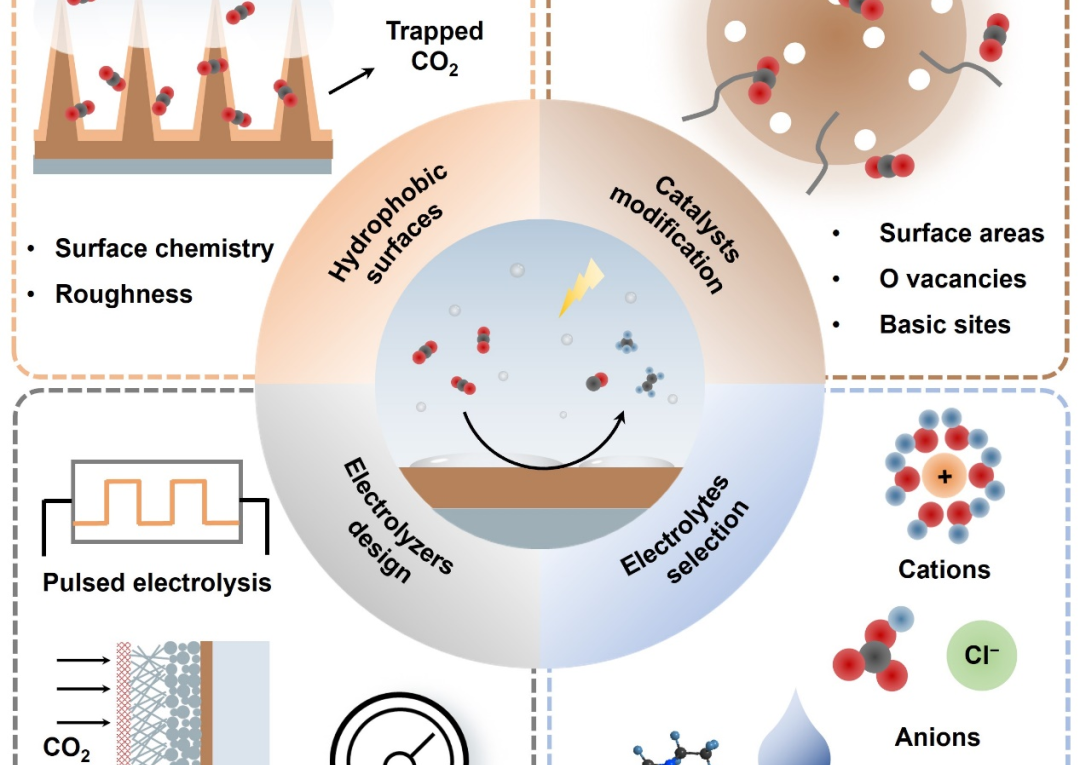Bioinspired Hydrophobicity for Enhancing Electrochemical CO2 Reduction
Abstract
Electrochemical carbon dioxide reduction (CO2R) is a promising pathway for converting greenhouse gasses into valuable fuels and chemicals using intermittent renewable energy. Enormous efforts have been invested in developing and designing CO2R electrocatalysts suitable for industrial applications at accelerated reaction rates. The microenvironment, specifically the local CO2 concentration (local [CO2]) as well as the water and ion transport at the CO2–electrolyte–catalyst interface, also significantly impacts the current density, Faradaic efficiency (FE), and operation stability. In nature, hydrophobic surfaces of aquatic arachnids trap appreciable amounts of gases due to the “plastron effect”, which could inspire the reliable design of CO2R catalysts and devices to enrich gaseous CO2. In this review, starting from the wettability modulation, we summarize CO2 enrichment strategies to enhance CO2R. To begin, superwettability systems in nature and their inspiration for concentrating CO2 in CO2R are described and discussed. Moreover, other CO2 enrichment strategies, compatible with the hydrophobicity modulation, are explored from the perspectives of catalysts, electrolytes, and electrolyzers, respectively. Finally, a perspective on the future development of CO2 enrichment strategies is provided. We envision that this review could provide new guidance for further developments of CO2R toward practical applications.
公众号:WileyChem


